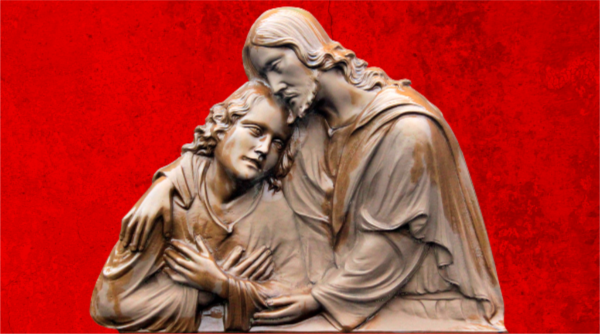‘Contrast and compare’ was a commonly used phrase used by the teachers who set our examination papers when I was at school. It is one of the best ways of highlighting and explaining a word or a truth by differentiating it from another, especially its opposite. That is why I will now compare and contrast the words meditation and contemplation, as used in the authentic Catholic mystical tradition, with the way they are misused by many pseudo-mystics today. This is especially true of those who teach techniques that promise to lead others into instant mystical experience.
True Contemplation is a pure gift of God
Fr. Keating, the renowned exponent of ‘centering prayer’ would take great pride in describing how he would arrive at a parish one day and on his departure the following day, he would leave all the congregation ‘contemplating.’ This is quite impossible, as the ancient Catholic tradition and teaching of the Church from the beginning insists. Contemplation is a pure gift of God through which the infused virtues on which sanctity depends are communicated to the receiver, in years rather than months. Centering prayer is but a modern form of the old heresy of semi-Pelagianism that teaches that we can do by our own endeavor what can only be done by the action of the Holy Spirit after many years of authentic prayer, meditation and purifying contemplation. This is the clear teaching of the great mystical doctors of the Church. Christianity is not about magic but love, and love has to be learned in years of practicing selflessness by carrying a daily cross and living what the first Christians called white martyrdom. As this is first practiced inside daily prayer, we become sufficiently prepared and purified to participate in Christ’s contemplation of his Father. That is why St. Angela of Foligno calls prayer the school of divine love.
It is understandable that in an age when people want instant pleasure in all they seek, they can be deceived into believing that the endless repetition of a word can enable them to experience mystical contemplation as described in Interior Castle by the great mystical doctor of the Church, St. Teresa of Avila. It was only after the age of forty that St Teresa began to experience the contemplation that Fr. Keating and his associates taught could be attained all but instantly. In his great book Enthusiasm, Monsignor Ronald Knox puts his finger on what vitiates all these movements that seek instant contemplation. They want to enjoy mystical experiences without the requisite ascetical preparation. They want to share in Christ’s risen life without sharing in his death and, they want to follow him all the way to Easter day without carrying the cross that he asks his followers to carry day after day.
Centering prayer, or ‘instant contemplation’
At the same time that Fr. Keating and his followers were discovering and spreading centering prayer, or instant contemplation in the USA, Mr. John Main was learning Yoga meditation techniques from a Yoga master, Swami Satyananda, in Malaya while working in the British Colonial Service as a layman in India. On returning to England, he became a Benedictine monk at Ealing Abbey in London. Without any training in authentic mystical theology, he began to read some of the works of authentic Catholic mystical authors, cherry-picking and misinterpreting random quotations to authenticate his meditation techniques. He taught the traditional practice of a Hindu mantra, the uninterrupted listening to the mantra, for which he substituted a Christian word. The only major difference between him and those teaching centering prayer is that what he calls meditation they call contemplation, although from his writing it is quite clear that he equates what he calls meditation with what the authentic Catholic tradition has always called contemplation. Despite their subtle differences, it is quite clear that the leaders of these two movements show no understanding of the authentic Catholic mystical tradition nor do they teach it. My own personal study of Transcendental Meditation in the ’60s led me to conclude that both Keating and Main have both derived their New Age teaching from the same Buddhist origin. It is the ignorance of our own mystical tradition that left an unfortunate gap filled by the erroneous teaching of such people as Keating, Main, Freeman and others.
Misunderstanding The Cloud of Unknowing
Main’s teaching contains no knowledge of mystical theology. He just handpicks from the Christian tradition what he thinks proves his own erroneous conclusions, made before he even entered the monastic life, that Christian and Hindu prayer are at heart one and the same. When he comes across this ancient teaching for the mystic way he takes it out of context and teaches people to use it immediately and continually come what may. It is for this reason that The Cloud of Unknowing is most often used as a work that confirms their erroneous teaching. But in the introduction to this work, the author insists, in the strongest terms, that his work is not for beginners and should indeed be hidden from the general reader. It is only for those in the night of purification, a point in the spiritual journey that those who give out mantras know nothing about. Yet they often refer to the ‘Cloud’ as if it were their Bible.
Meditation is how love is generated, not by repeating mantras
The Apostles and the first disciples met Christ regularly on a daily basis. In coming to know him they came to love him. After the Resurrection, this love enabled then not just to be close to him as before, but to enter into his new and glorified being, and into the action of his loving contemplation of God. New converts who never knew Christ were taught a new form of prayer that would enable them to do this. It was called meditation and it consisted of reading, rereading, reflecting and ruminating on the life of the most loving and adorable man who ever lived. It was here, in this new form of prayer that new Christians were able to generate a quality of loving that would enable them to be taken up into Christ as he is now, and into what he is doing now, under the influence of the Holy Spirit who inspired the scriptures in the first place. And what he is doing now is lovingly contemplating his Father and receiving the fruits of this contemplation to share with others. The first fruit of contemplation is love. It is the love that Christ as God’s son, experienced before his birth on earth in his divine nature alone. This is the purely spiritual love that bonded him to the Father from eternity. After the Resurrection, this spiritual love known to us as the Holy Spirit, filtered down into and through his human nature into the human natures of others beginning on the first Pentecost.
Love is received by returning love in kind
In all forms of love, the love of another can only be fully received in the act of returning their love in kind. In returning God’s love, our love for him is generated and deepened in meditation when we reflect and ruminate on his love, as embodied in Jesus Christ. Then, as this love cannot unite us with Christ as he once was, it leads us on, to unite us with him as he is now. The desire to seek his love in the first place rises from the very depth of our being. As God has created us in his own image and likeness, it is from here that our desire to love and be loved by infinite loving arises. It is for this reason that it can only ultimately be satisfied by God himself. Thanks to Jesus Christ this desire can finally be fulfilled. For it is he who continually pours out into our spirit his Holy Spirit, so that a new and supernatural fusion of love and loving is born, as the two become one. This loving enables us to be taken up into Christ’s own personal loving of God his Father, to receive and share with others the fruits of contemplation in this life, before experiencing them fully for themselves in the next.
Sharing in the Fruits of Contemplation
In whatever way prayer begins and develops at the outset, it always leads to the profound prayer that yearns for the fullness of love that will enable us to enter ever more fully into Christ’s contemplation of the Father. It is for this that God has created us from the beginning. It never was nor ever could be an optional extra for a few ‘pious souls’. Nevertheless, this was for years the conventional wisdom of the spiritually deprived who have been infected for generations by the false propaganda of the anti-mystical lobby. Their work still lives on as part of the DNA of so many clerical teachers and spiritual directors, positively preventing many from learning the true love that is brought to perfection in mystical contemplation. Sharing in Christ’s contemplation further enables us to receive and then share with others the fruits of Contemplation, making us the instruments through which God’s plan to share his life and love with others is brought about.
A New Supernatural Fusion of Love
I was in the middle of a talk on prayer when the parish priest who was also the prior of the community interrupted me. ‘What about the sacraments, the liturgy and what about the Mass?’ he said. “Are not these the most important means through which Christ communicates his love to us?” Of course, there is only one answer, “Yes, absolutely.” But what is it that is continually available to us through the liturgy and the Mass and the other sacraments? It is the love of God. Now, like any other form of love his love can only be received by those who continually generate the only love that can open them to receive it. I have called this special form of love a supernatural fusion of love because it is formed when human and divine love become as one in prayer. In the very act of us trying to raise our hearts and minds to God in prayer, his Holy Spirit is able to penetrate and permeate our love with his own, making possible what is totally impossible without it. What is possible now since Jesus sent out the Holy Spirit is that his Spirit mingles, mixes and then merges with our Spirit to suffuse and surcharge our love with his love. This enables us to be open to and receive the infinite love of God in whatever measure we have been prepared and purified to receive it.
Although it is true that the Mass, the liturgy and the sacraments are the main means by which God’s love is offered to us, they are not magic. Unless we generate the sort of love in prayer that I have been speaking about then we cannot receive his love, nor therefore can it have any influence for the better on our spiritual lives. Prayer is where we practice in our spiritual lives the love that I have been describing that can alone open us to the only love that will restore us to full health, and even raise us from the dead. This can never happen by saying mantras. Anyone who believes and teaches that this profound union can take place by merely reciting mantras has completely lost their spiritual bearings betraying an utter ignorance of the Catholic mystical tradition.
Image courtesy of Pixabay.
Editor’s note: This article, “Contrast And Compare: Contemplation And Its Counterfeit,” originally appeared on SpiritualDirection.com and is republished here with kind permission.












